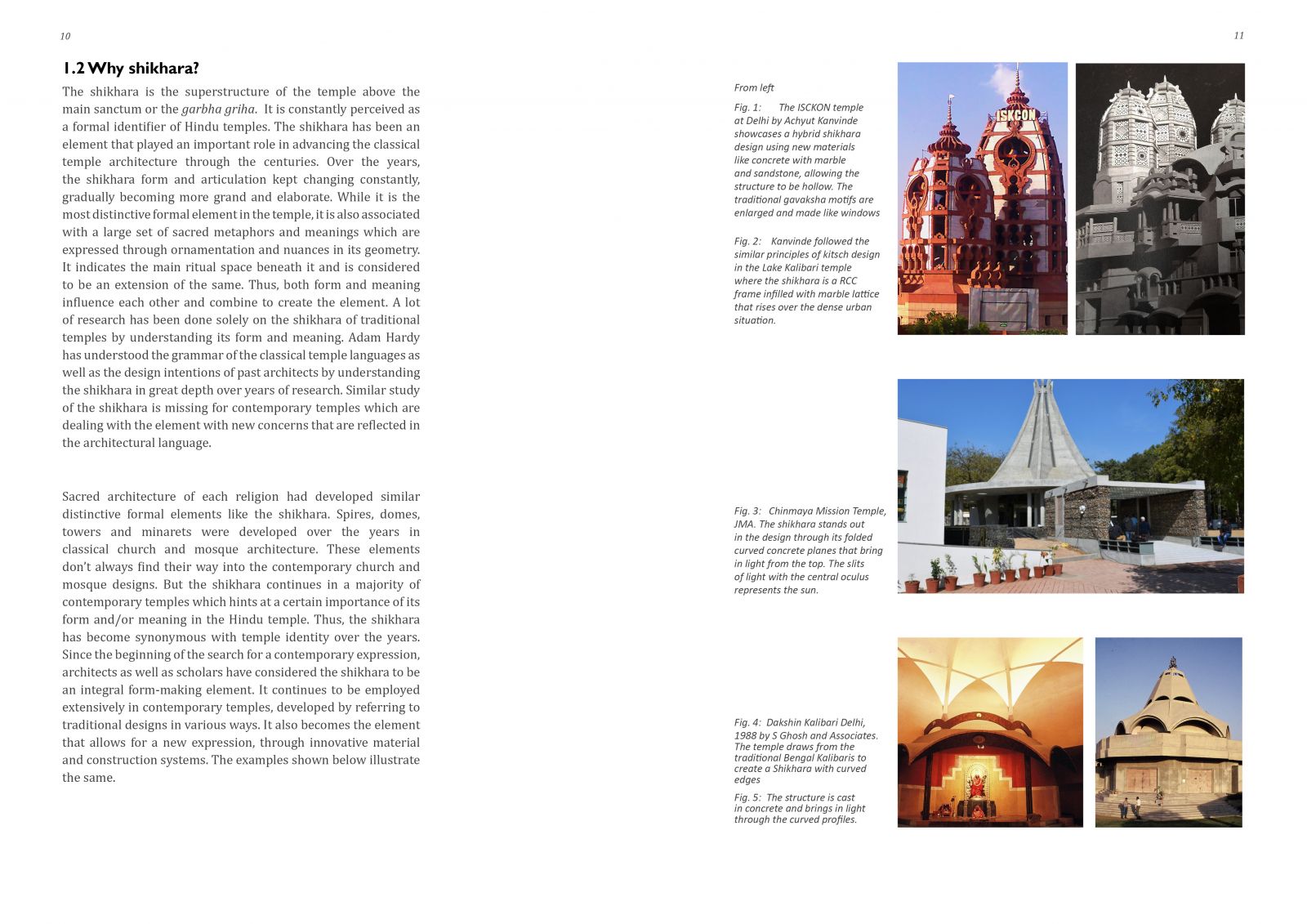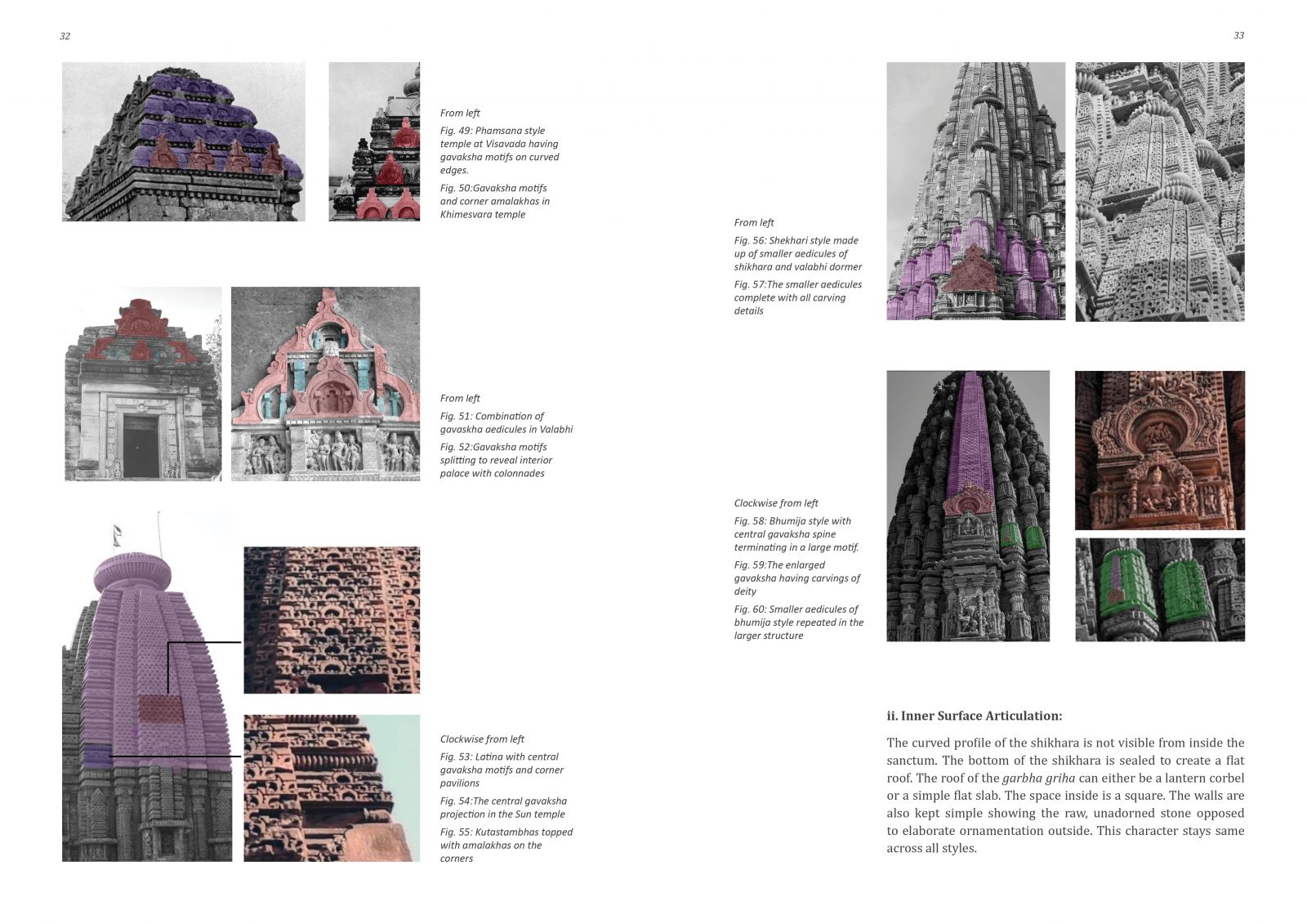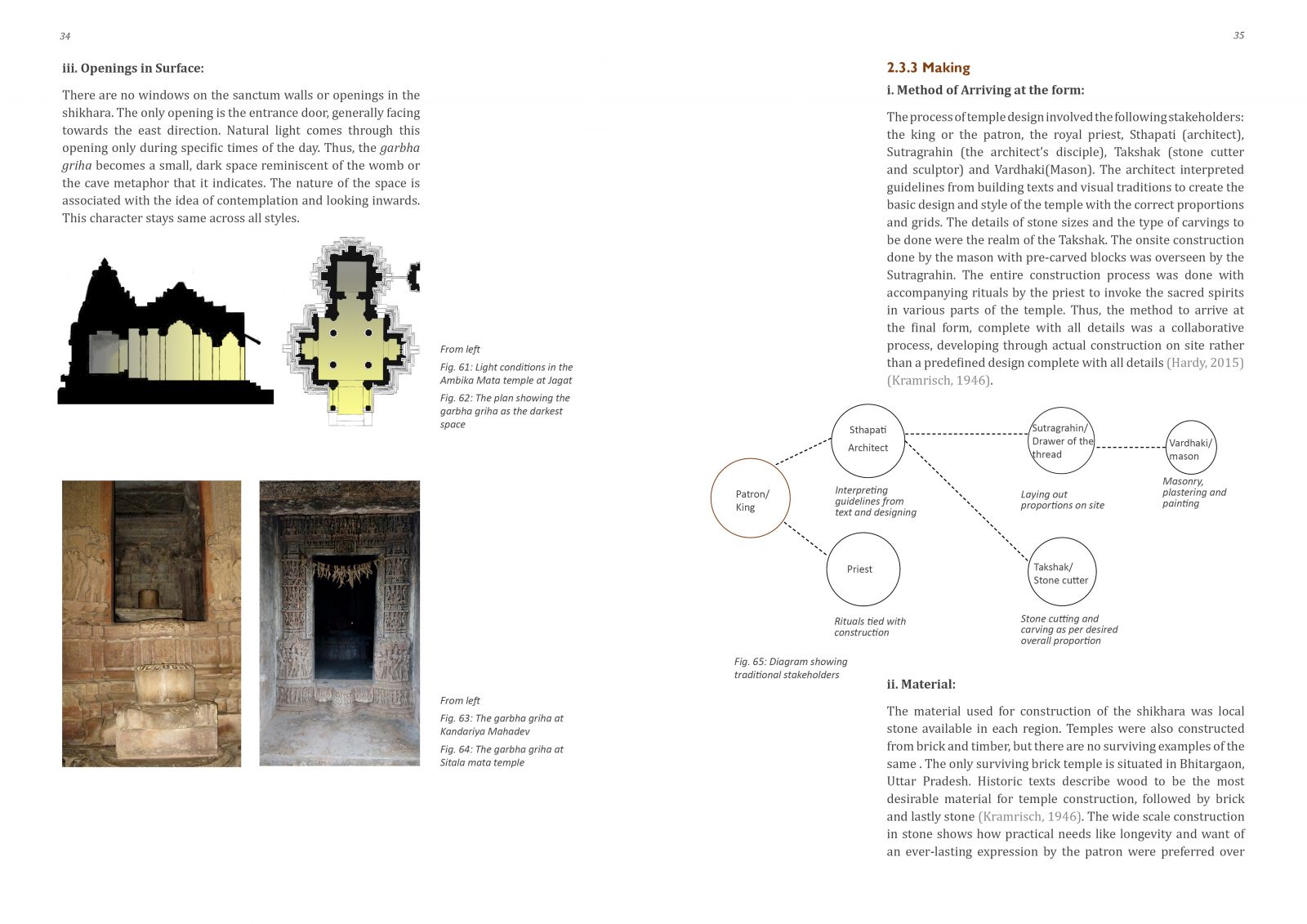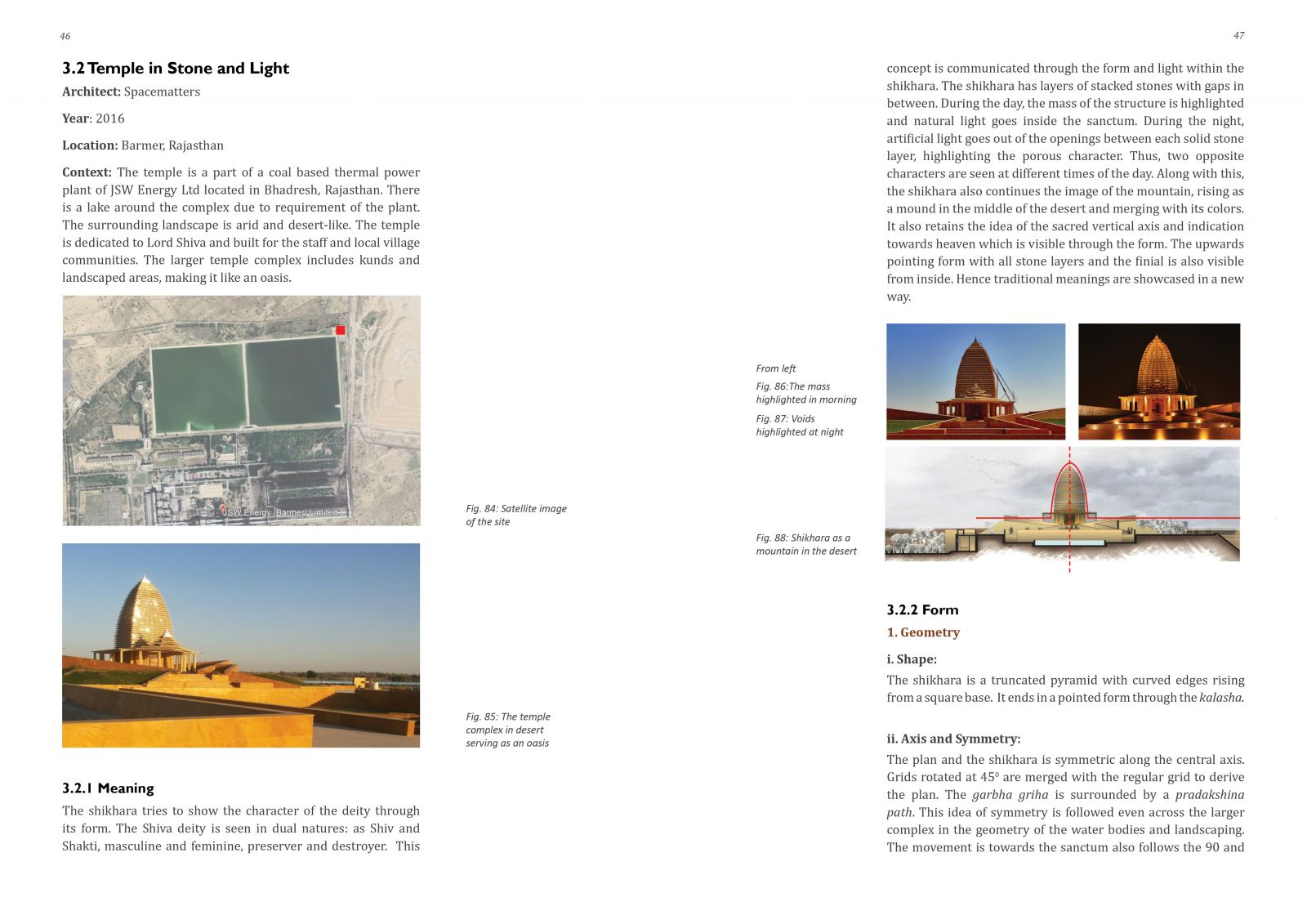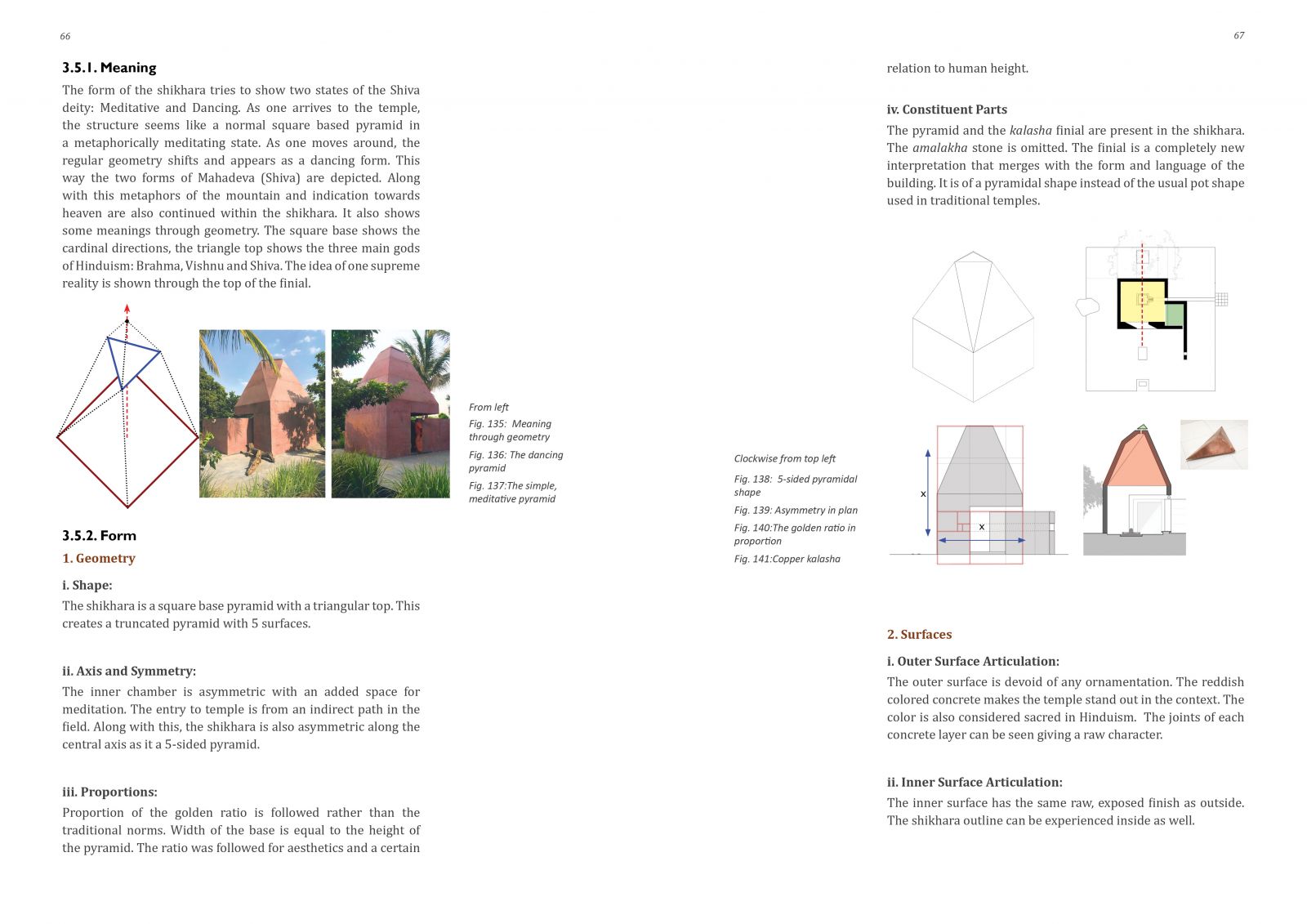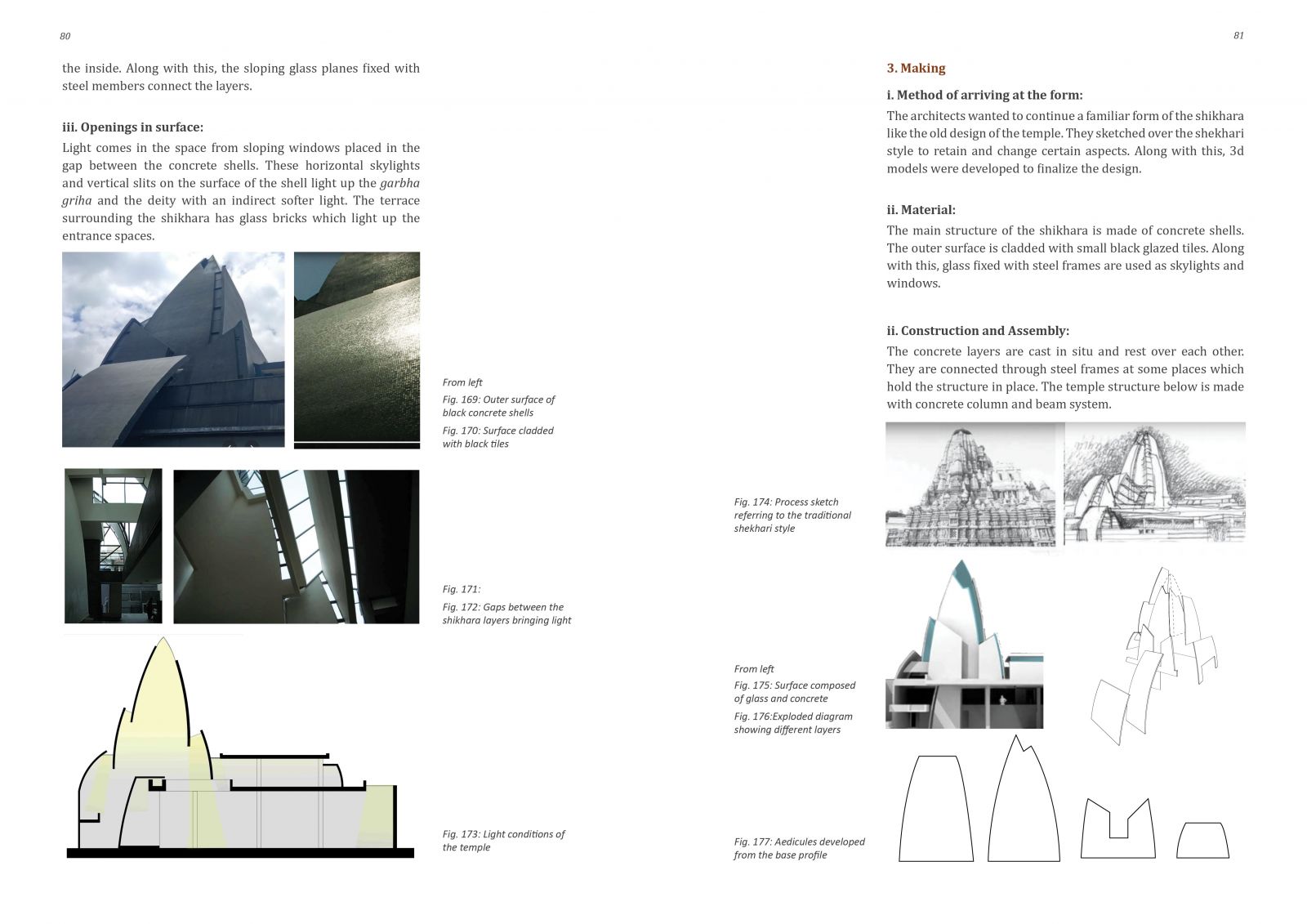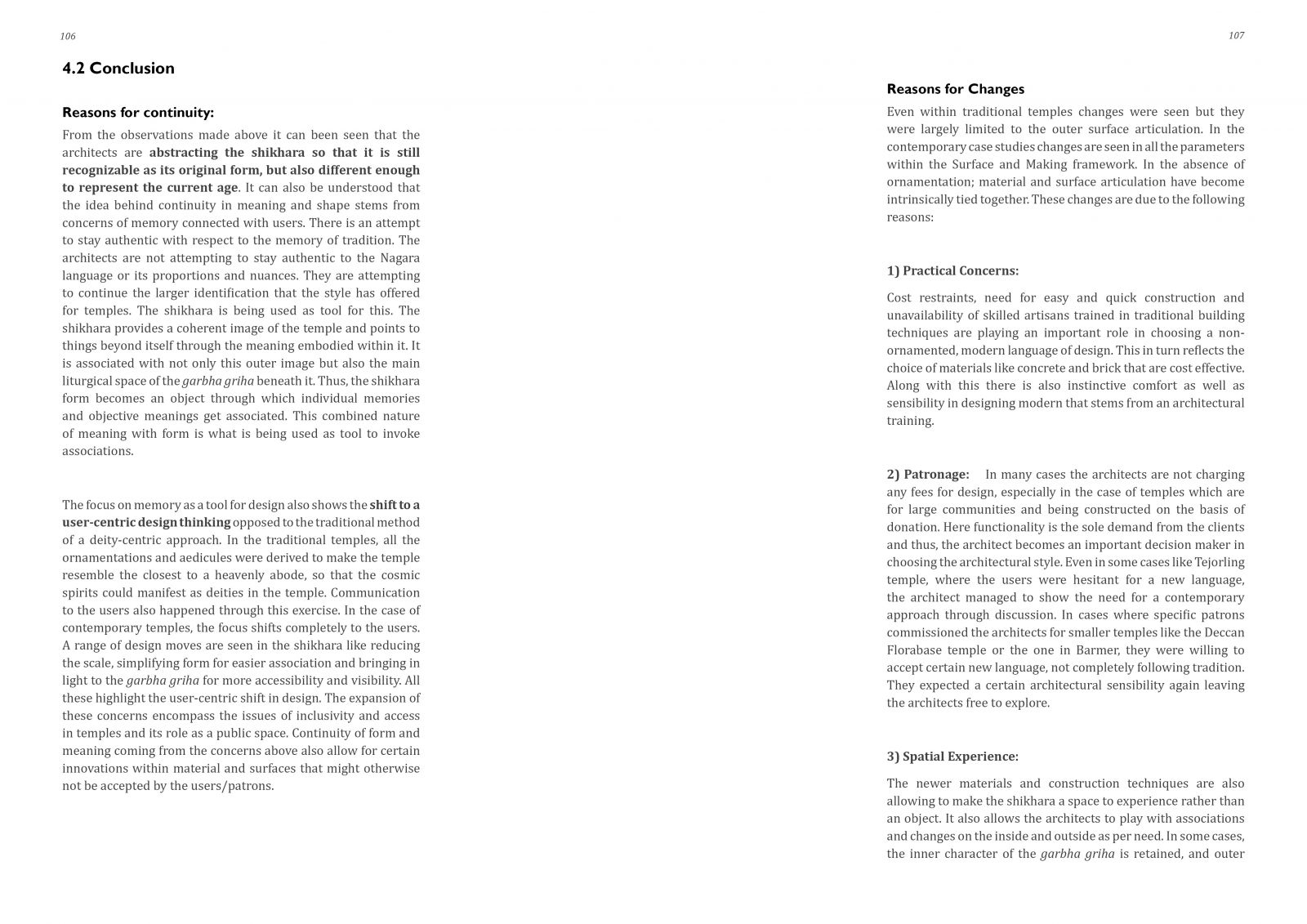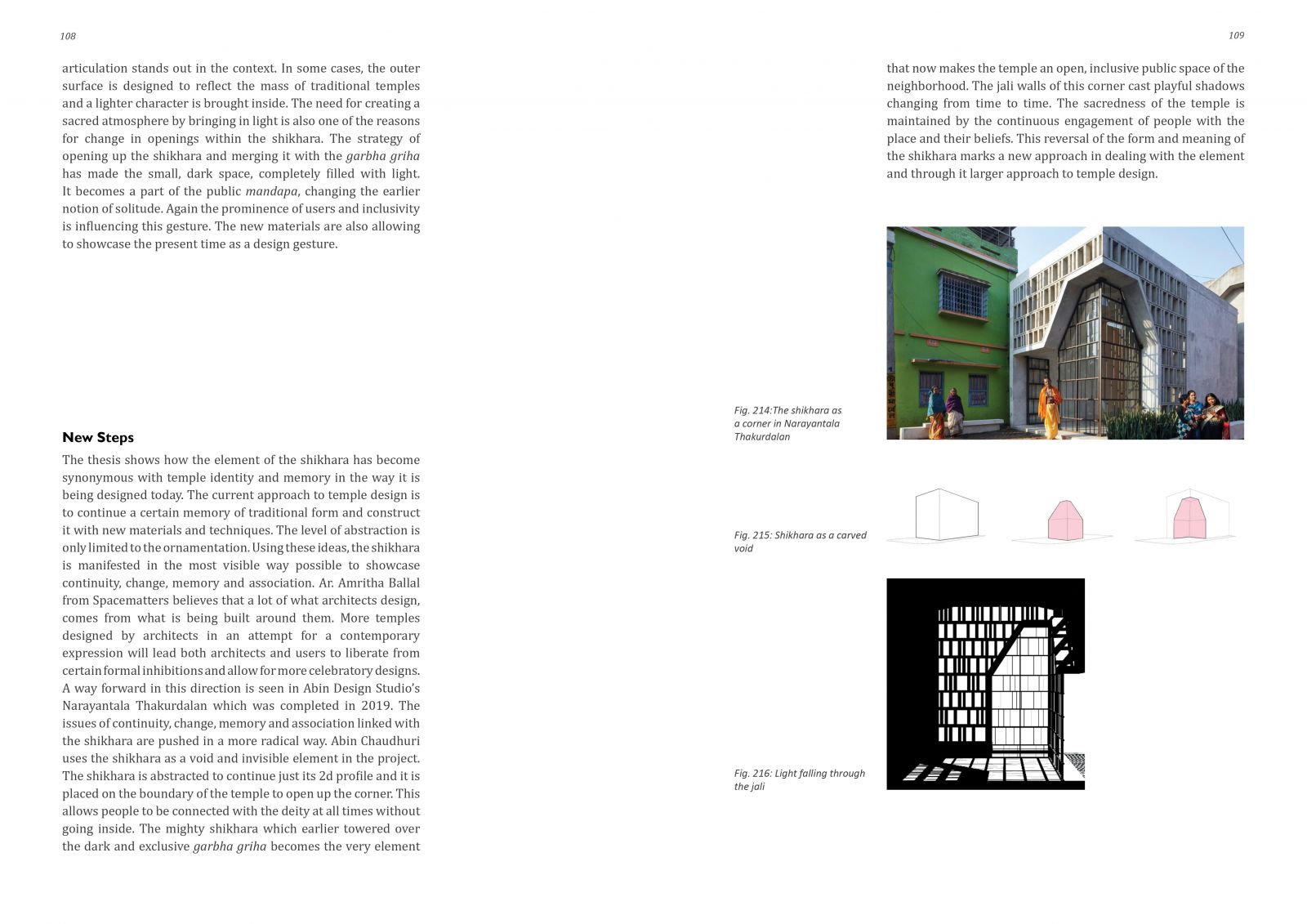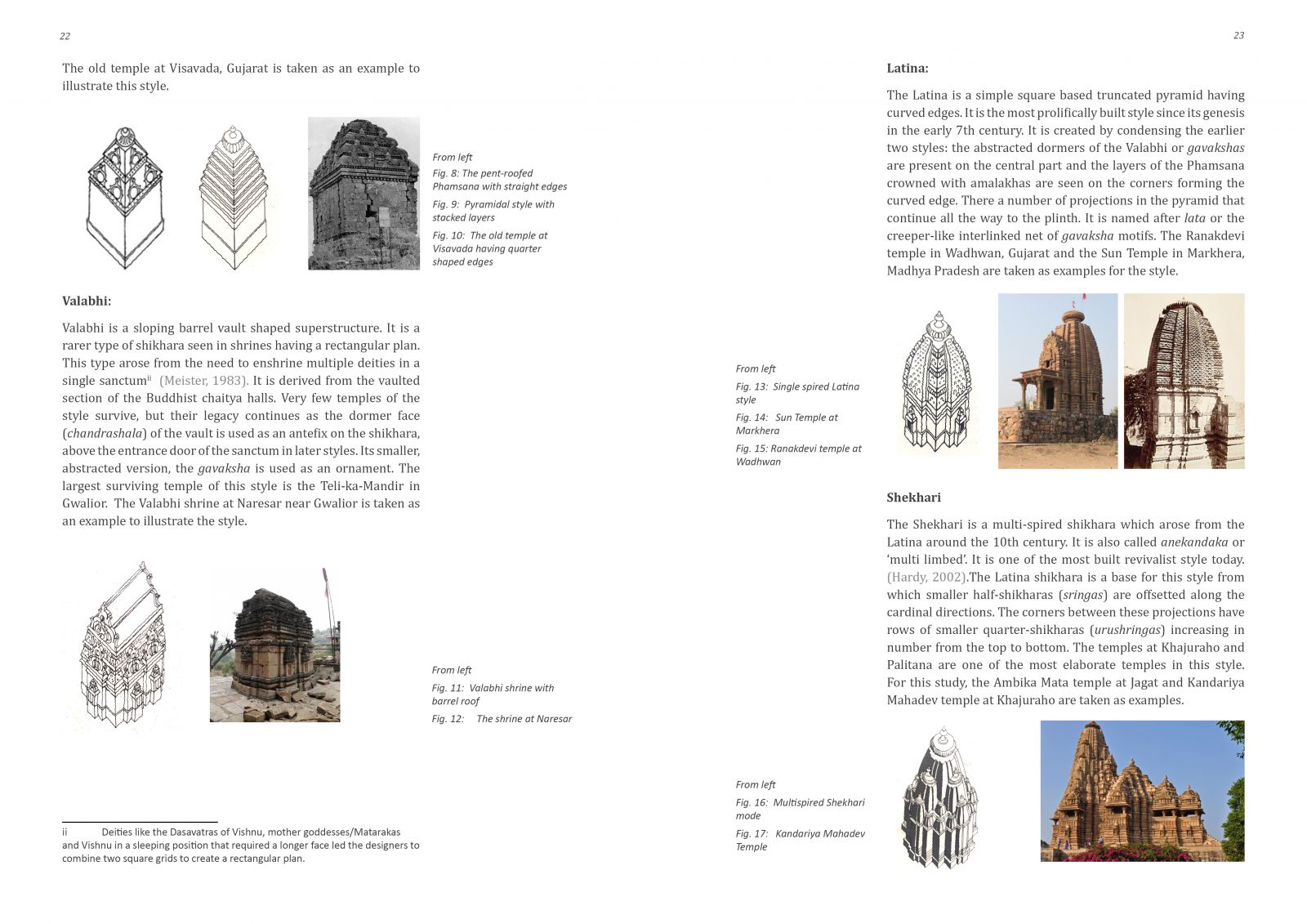Your browser is out-of-date!
For a richer surfing experience on our website, please update your browser. Update my browser now!
For a richer surfing experience on our website, please update your browser. Update my browser now!
The Shikhara developed in the medieval Hindu temples is a distinctive element which still continues to be an integral and prominent part of contemporary temples. Newer functional demands of gathering and congregation are addressed by making modifications to traditional Garbha Griha and Mandapa spaces. The small range of contemporary examples designed by architects show an interesting approach in dealing with spaces, light, movement, axis and thresholds. In the Shikhara also, innovations are seen in its construction and articulation. However, the overall form stays close to the traditional silhouette. Dr. A Srivathsan highlights the following reasons for this continuity of tradition in contemporary templesi : 1) Lack of Discourse and Practice on the subject. 2) Existing discourse favoring tradition 3) Apprehensions about the ability of modernism to produce sacred in the Hindu context. Accepting these reasons affecting the larger approach to temple designing, the thesis investigates the continuities and deviations in the Contemporary Shikhara with respect to the traditional Nagara shikhara and their reasons. The investigation is done through a study of form and meaning. A range of contemporary approaches and concerns in temple designing are presented in the first chapter through built examples designed by architects, sthapatis, engineers and sculptors. A study of traditional Nagara Shikharas is done through literature reviews in the second chapter to form a base to understand the contemporary temples. The contemporary Shikhara is analyzed through 9 case studies by reading drawings and conducting interviews with the respective architects. The continuities and deviations within the contemporary cases are identified with respect to tradition. The thesis concludes through an empirical study that even though deviations are seen in material and surface articulation, the general approach is to continue tradition through the element of the Shikhara. The reason for continuity is to create memory and association with the user: a need arising from the shift to a user centric design from a deity centric design approach. The deviations in material and construction are largely due to practical concerns and the need of a certain spatial character.
